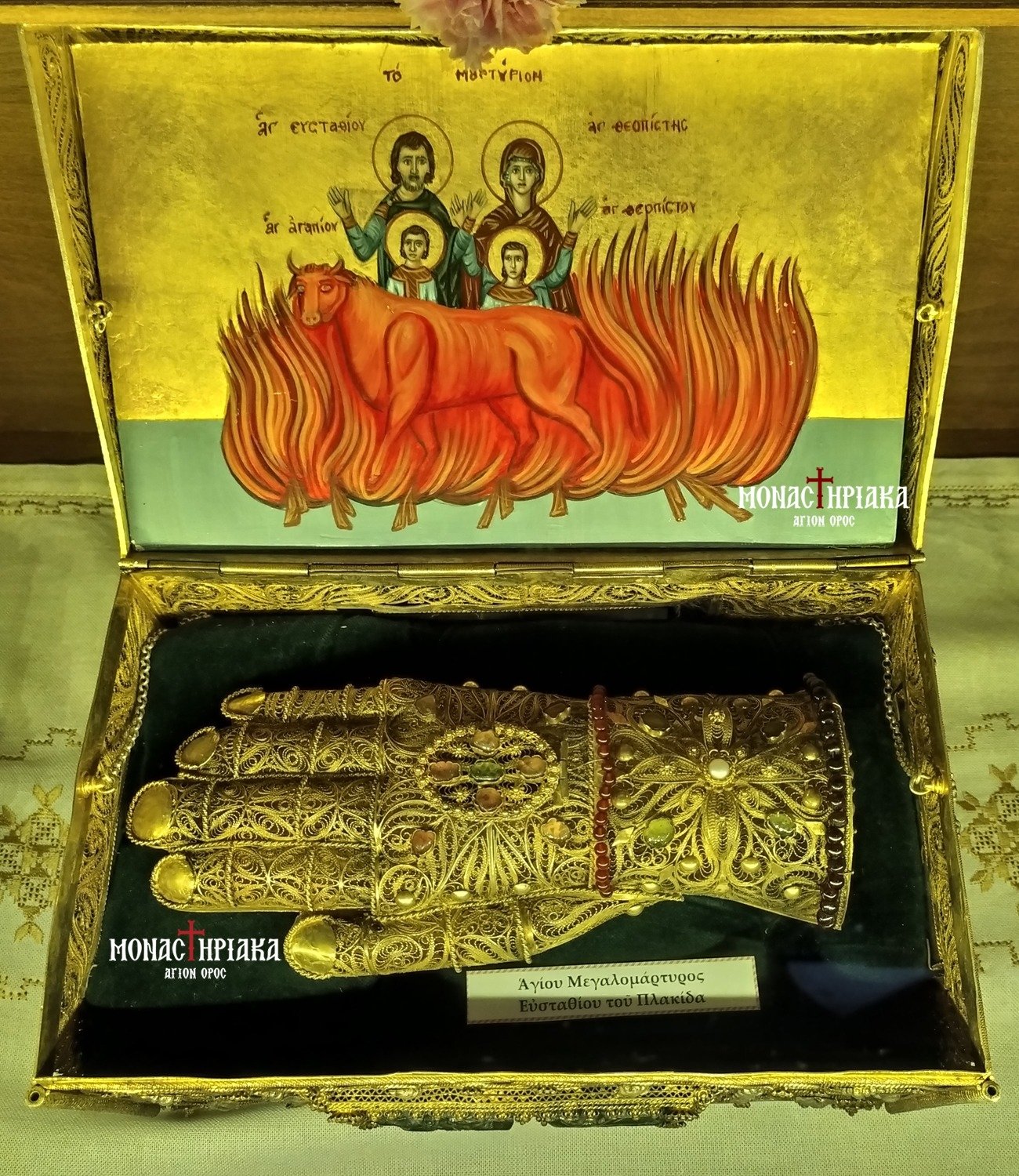Saints that were also Mothers – Brief Biographies - Lived with Christian Love and Patience
In the Orthodox Synaxarion, there are several female Saints, who were also mothers.
Mother Saints are a characteristic example of christian love, spiritual strength, and patience. Throughout their lives, they carried out a huge Christian work, stood by their family and sacrificed themselves for their faith and children.
Furthermore, these mothers serve as a shining example for families today and reveal the power of motherhood and the upbringing of children on the path of the Lord. Through the lives of the Holy Mothers, the value of faith and boundless love for the Lord Jesus Christ and the family is raised.
In this article you will learn about the lives of sixteen Saints who were also mothers.
Saints that were also mothers
1. Maria, the mother of Jesus Christ
2. Saint Anna, Mother of the Virgin Mary
3. Saint Elisabeth, the mother of Saint John the Forerunner and Baptist
The Holy Mothers of the Three Hierarchs
4.Saint Emmelia, the mother of Saint Basil the Great
5. Saint Nonna, the mother of Saint Gregory the Theologian
6. Saint Anthousa, the mother of Saint John Chrysostom
7. Saint Helen, the mother of Saint Constantine the Great
8. Saint Theodoti, the mother of the Holy Unmercenaries Saints Cosmas and Damian
9. Saint Sophia, the mother of Saint Pisti, Saint Elpida, and Saint Agape
10. Saint Anthi, the mother of Saint Eleftherios
11. Saint Euboula, the mother of Saint Panteleimon
12. Saint Eulogia, the mother of Saint Theodosius the Cenobiarch
13. Saint Martha, the mother of Saint Simeon
14. Saint Hypomone, the mother of eight children
15. Saint Julitta, the mother of Saint Cyricus
16. Saint Theopiste, the mother of Saint Agapius and Saint Theopistus
Find here the book of Elder Paisios of Mount Athos - Family Life.
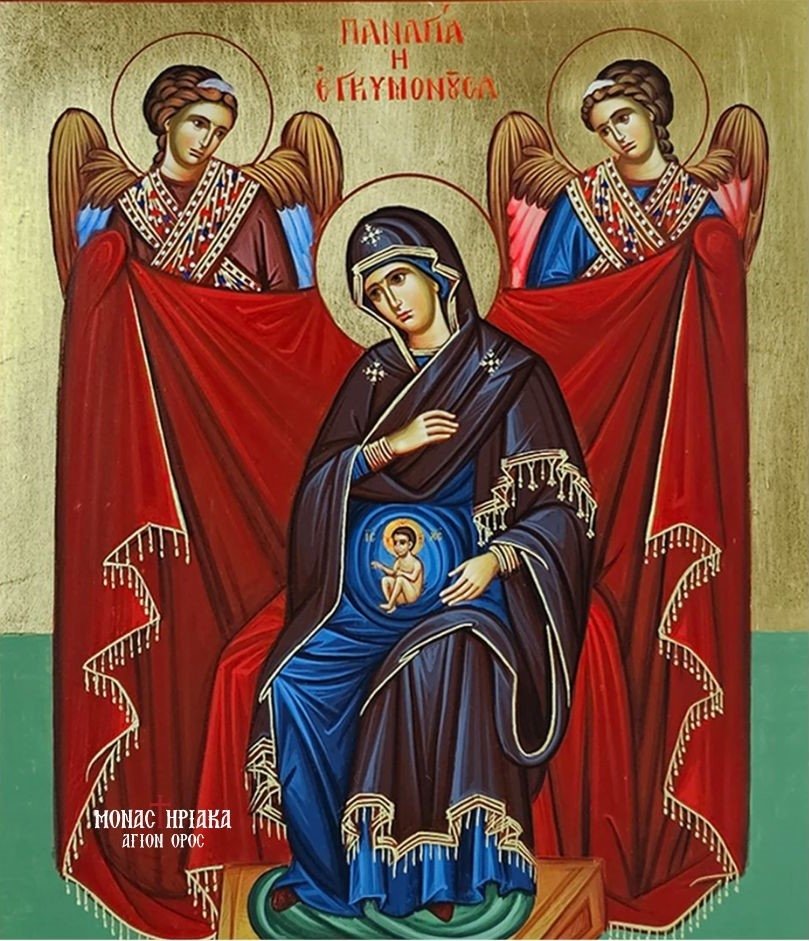
Maria, the mother of Jesus Christ
Maria was the daughter of Joachim and Anna, an elderly couple who lived for many years without being able to conceive.
The Almighty heard the prayers of the couple and deemed them worthy to bring a child into the world, with the promise that they would dedicate the child to Him. Indeed, Anna and Joachim fulfilled their promise and presented their daughter Mary to the priest Zacharias at the temple.
The high priest received the Virgin Mary at the age of three and led her into the Holy of Holies. Mary remained in the Temple of Jerusalem for twelve consecutive years and then returned to Nazareth, where she was betrothed to the devout Joseph.
Find here the book: The Mystery of Marriage
Divine Grace illuminated Maria when the Archangel Gabriel conveyed to her the divine message that she would become Theotokos and bear a son, the Savior of the world, our Lord Jesus Christ. Theotokos «was found with child of the Holy Spirit» (Matthew 1:19), indicating the supernatural conception of Jesus Christ with the assistance of the Holy Spirit.
Maria remained pure and virgin throughout her life, before, during, and after giving birth, and for this reason, our Church calls her Ever-Virgin.
When Jesus Christ was forty days old, the Virgin Mary, together with Joseph, brought Him to the Temple of Jerusalem, where they were greeted by Simeon the Righteous. There, the miraculous event of the Presentation of the Lord (Candlemas) took place.
In the Orthodox Church, the Presentation of the Lord is considered the Christian feast of the Mothers.
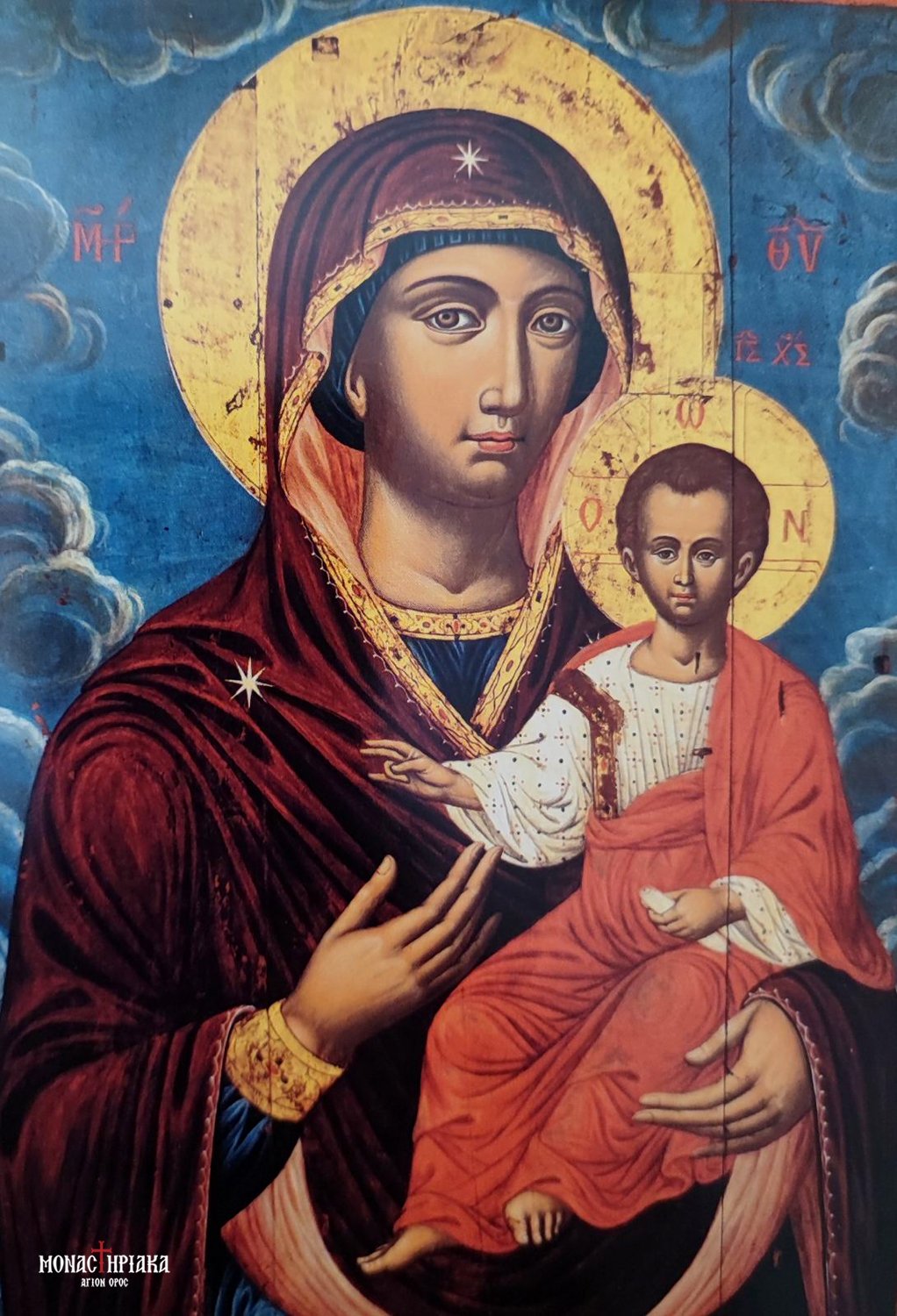
Here you can find our articles regarding the Candlemas.
Theotokos fell asleep at the age of 60 and was buried in Jerusalem, where today rests the Most Holy Sepulchre of the Mother of God in Gethsemane.
Important Feasts referring to Virgin Mary:
- Nativity of the Theotokos (September 8th)
- Entrance of the Virgin Mary into the Temple (November 21st)
- Annunciation of the Virgin Mary (March 25th)
- Synaxis of the Theotokos (December 26th)
- Candlemas/ Presentation of Jesus Christ (February 2nd)
- Deposition Honest Gown of the Most Holy Theotokos at Vlacherna (July 2nd)
- Dormition of the Virgin Mary (August 15th)
- Holy Belt (August 31st)
- The feast of the Holy Skepe - Holy Protection (October 28th)
- Life-Giving Spring (Friday of Easter Week)
Here you can find icons of the Most Holy Theotokos.
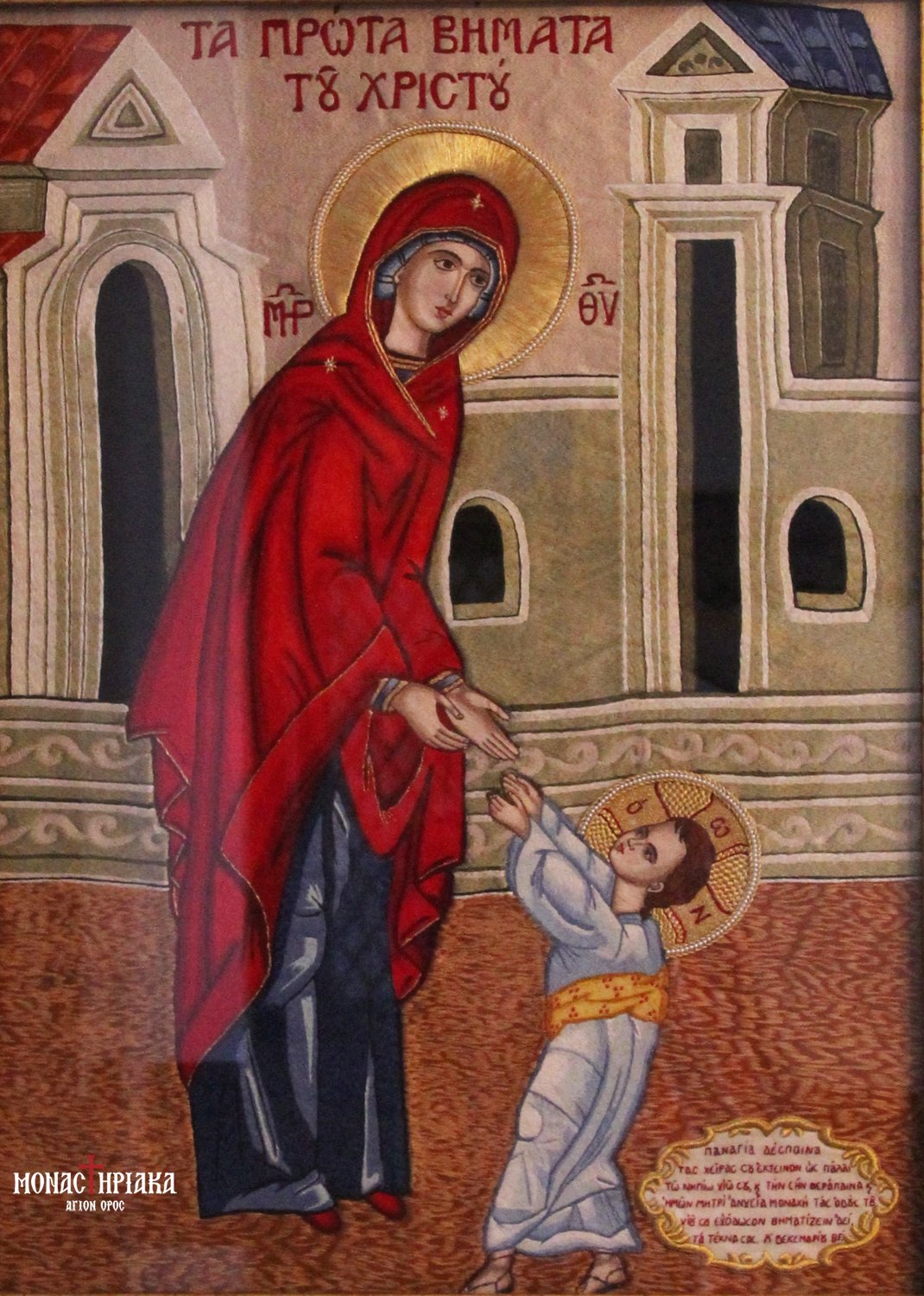
Rare depiction of the first steps of Jesus Christ as a child with the Virgin Mary, mother of God.
Saint Anna, Mother of the Virgin Mary
Saint Anna was consecrated at the age of three in the Temple of Jerusalem by her parents, Matthan and Mary. As she grew older, she married Joachim from the tribe of Judah and they lived near the Pool of Bethesda in Jerusalem.
Despite reaching old age without having children, they fervently prayed to God and were granted their long-awaited child, Maria.
When Maria reached the age of three, her parents dedicated her to the Temple of Jerusalem, fulfilling their promise to God. Saint Anna reposed at the age of 83, when Maria was nine years old. Eleven months earlier, Joachim had departed from earthly life.
Our Church commemorates the memory of Saint Anna three times a year. On September 9th, we celebrate her memory along with the righteous Joachim, on December 9th we commemorate her conception, and on July 25th we celebrate the dormition of Saint Anna.
Here you can find icons of Saint Anna.
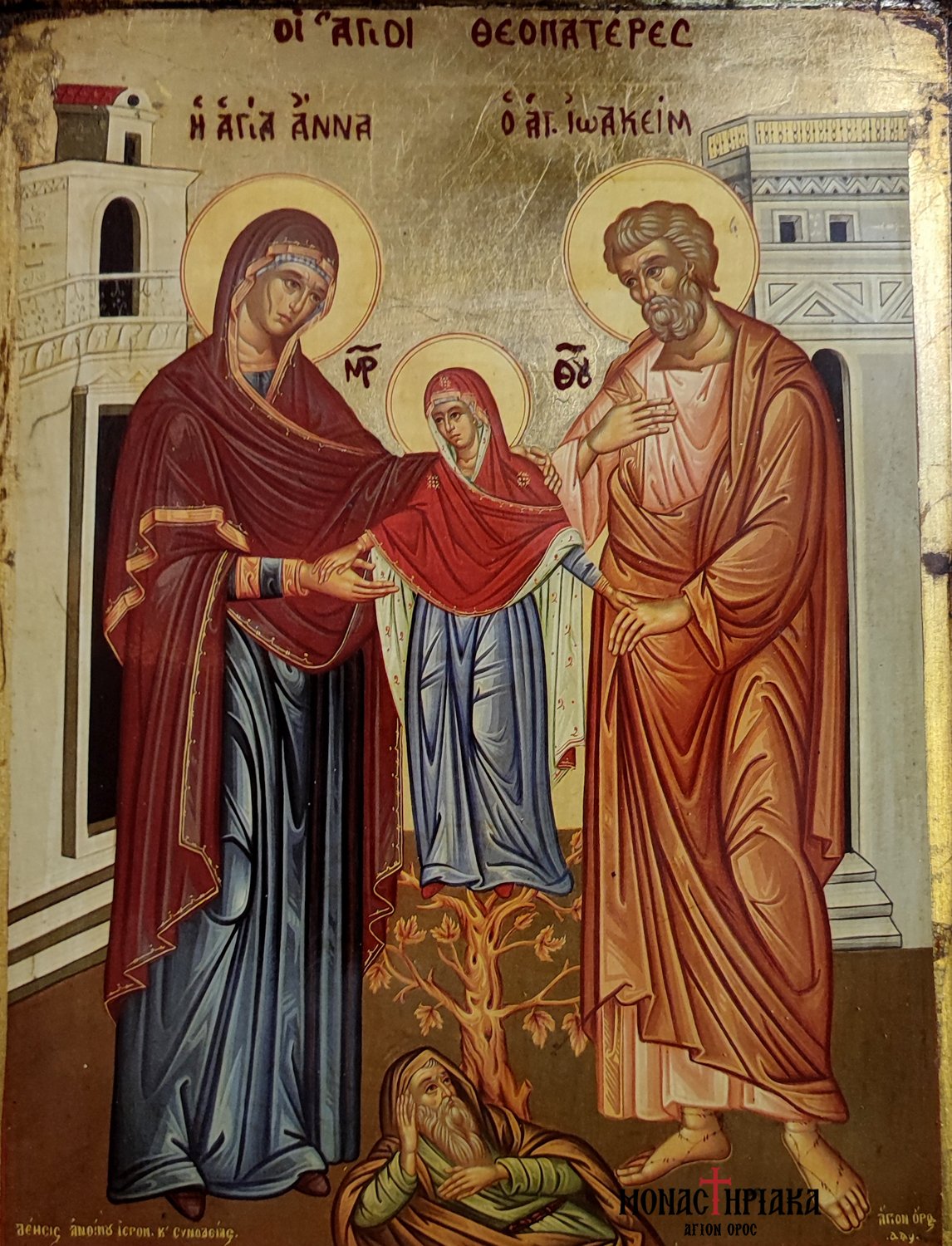
Saint Elisabeth, the mother of Saint John the Forerunner and Baptist
Saint Elisabeth was the cousin of the Virgin Mary, the wife of the prophet Zechariah, and the mother of Saint John the Forerunner. For many years, Elizabeth struggled to carry a child, until an Angel of the Lord announced to Zechariah that they would become parents and that the boy they would have, would be named John.
Read here about the admirable life of Saint John the Forerunner.
Despite Zechariah's disbelief, Elisabeth gave birth to a son, Saint John the Baptist and together they glorified God. Our Church commemorates the memory of Saint Elisabeth and the Prophet Zechariah on September 5th.
Here you can find handmade iconography from Mount Athos featuring Saint Elisabeth.

Here you can find an icon of the Prophet Zechariah.
The Holy Mothers of the Three Hierarchs
According to the writings of the Three Hierarchs, the Holy Mothers of the Three Hierarchs lived with heroism and were glorified for their struggles, their faith and the great patience that they showed throughout their lives.
Here you can find an icon of the Three Hierarchs.
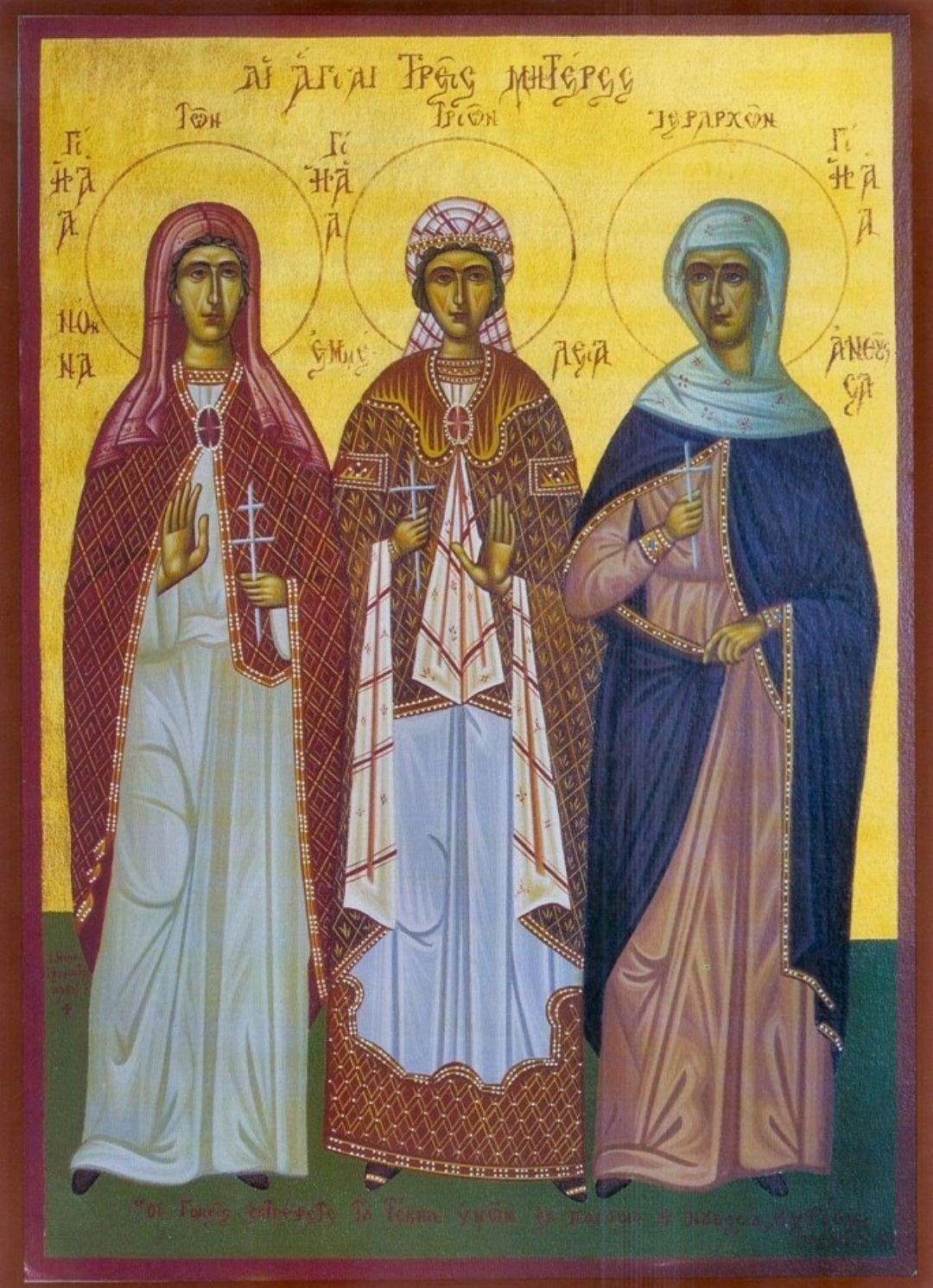
Saint Emmelia, the mother of Saint Basil the Great
Saint Emmelia hailed from Caesarea of Cappadocia and was the daughter of a wealthy and prominent family. As we learn from Saint Gregory the Theologian, Saint Emmelia was never influenced by her affluent background and always endeavored to live according to the Gospel and the word of God.
She married a unassuming man with great christian faith, Basil, and together they had ten children. Four of them, Basil, Gregory, Naucratius, and Peter, followed the path of the Lord.
The significance of Saint Emmelia as a christian mother is captured in the words of Saint Basil the Great: "From childhood, I received an understanding of God from my blessed mother." (Letter to Eustathius of Sebasteia, 223)
Saint Emmelia also engaged in significant philanthropic work and advised her children to do the same. She reposed in 370 AD and was buried next to her husband, Basil.
Here you can find icons of Saint Basil the Great.
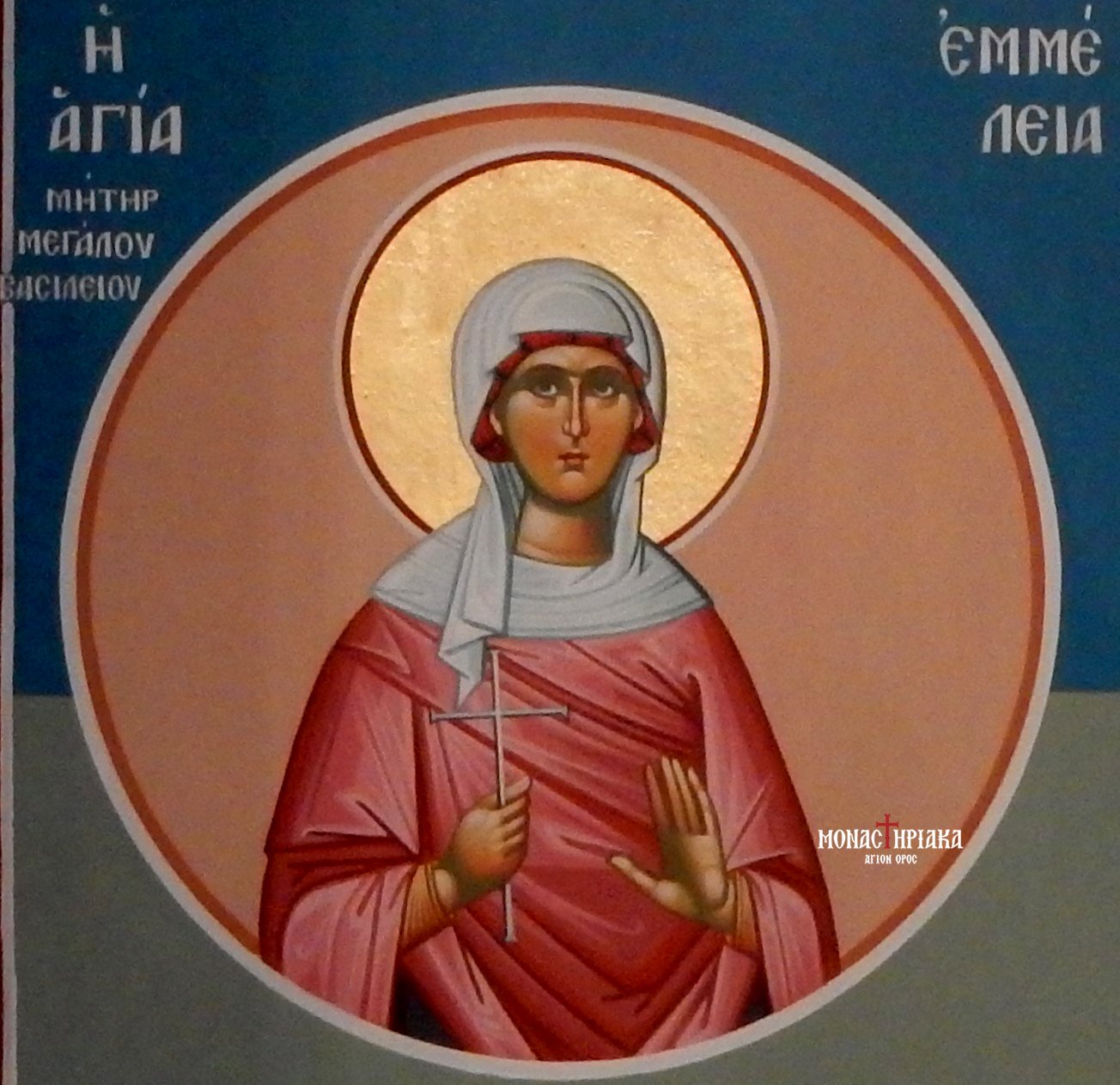
Saint Nonna, the mother of Saint Gregory the Theologian
Saint Nonna was born in Arianzos of Cappadocia in 304 AD and came from a wealthy family. Her parents, Filtatios and Gorgonia, were virtuous and devout.
From a young age, Saint Nonna had faith in God. When she grew up, she married Gregory, who was a lawyer and later became a High Priest and together they had three children.
Saint Nonna was the mother of Saint Gregory the Theologian and endeavored to instill great virtues, christian faith, and love for their fellow human beings in her children through Holy Scripture.
Saint Gregory the Theologian referred to his mother Nonna as "a branch from a holy and devout root".
Saint Nonna peacefully passed away around 370 AD and our Church commemorates her memory on August 5th.
Here you can find icons of Saint Gregory the Theologian.

Saint Anthousa, the mother of Saint John Chrysostom
Saint Anthousa hailed from a virtuous and wealthy family in Antioch. From a young age, she lived with christian faith and married Secundus, a member of the Antiochian Church. Blessed and beloved as they were, they had a son, Saint John Chrysostom.
After the sudden death of her husband, Saint Anthousa dedicated herself entirely to the upbringing of her son. She admired him for his christian journey and prayed for him to remain close to her until her last breath.
Saint Anthousa peacefully fell asleep at the age of 43. After his mother's death, Saint John Chrysostom sold all his possessions and departed for the desert, following the Lord's call.
Click here: Biography of Saint John Chrysostom
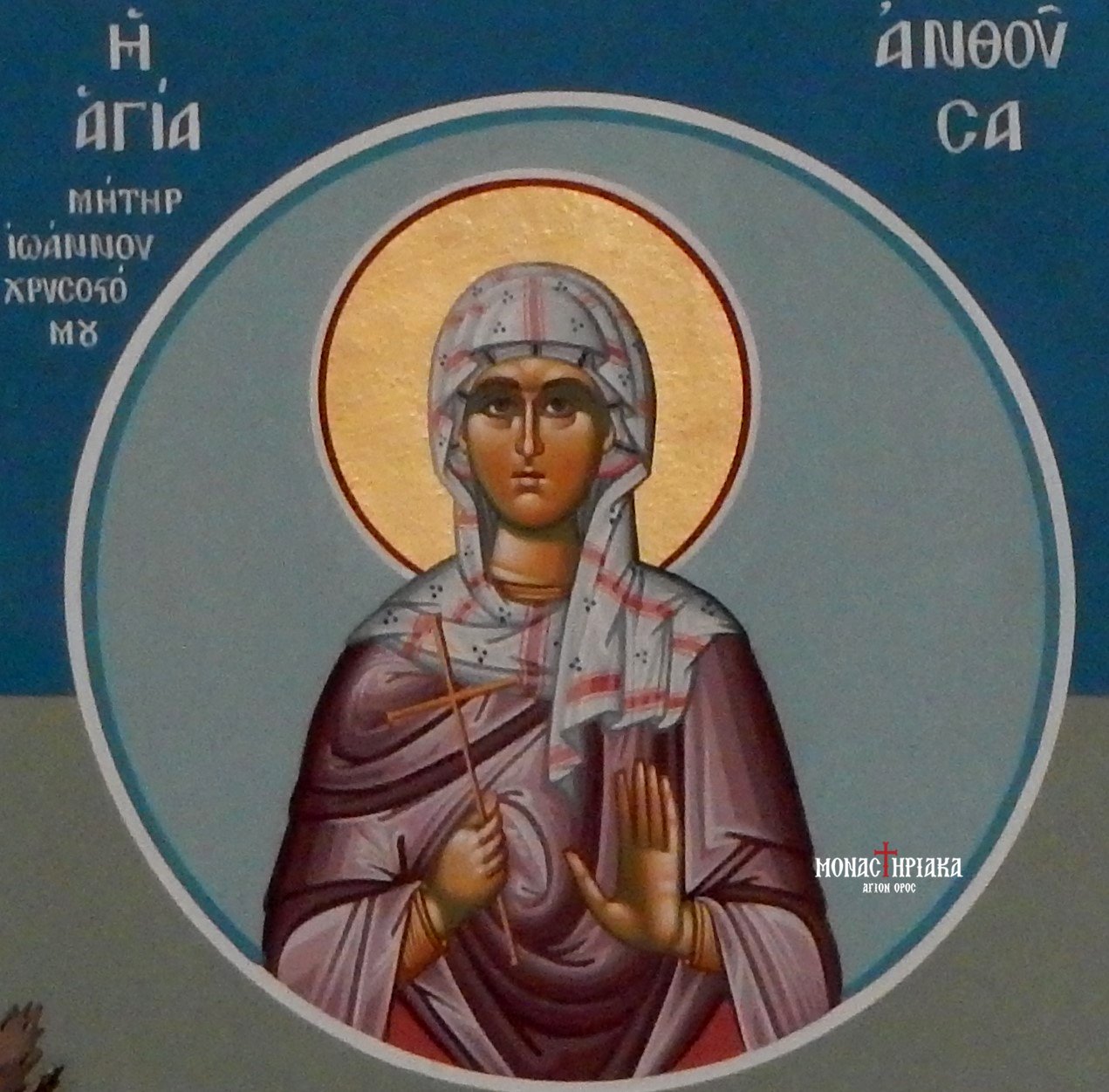
15 Wise Words for the everyday life by Saint John the Chrysostom
The mothers of the Three Hierarchs, Saint Emmelia, Saint Nonna and Saint Anthousa are celebrated on the Sunday between February 3rd and 9th each year.
Here you can find icons of Saint John Chrysostom.
Saint Helen, the mother of Saint Constantine the Great
Saint Helen was born in Drepana, Bithynia, in Asia Minor and came from a poor family. She was distinguished for her rare virtues and intelligence. At the age of 22, she married Constantius Chlorus, an officer of the Praetorian Guard, and they had a son, named Constantine.
When Constantine succeeded his father on the throne, he relied on his mother, Helen. Despite the fame and social status she acquired, Saint Helen remained humble and carried out extensive philanthropic work throughout her life. Additionally, she contributed significant funds for the construction of churches.
Saint Helen is responsible for the discovery the Holy Cross in Jerusalem in 326 AD, as she was led to it by the fragrance of a plant growing in that area, the famous basil plant.
Saint Helen peacefully passed away in 329 AD at the age of 80. Our Church commemorates her memory along with her son, Saint Constantine, on May 21st.
Here you can find icons of Saint Helen and Saint Constantine.
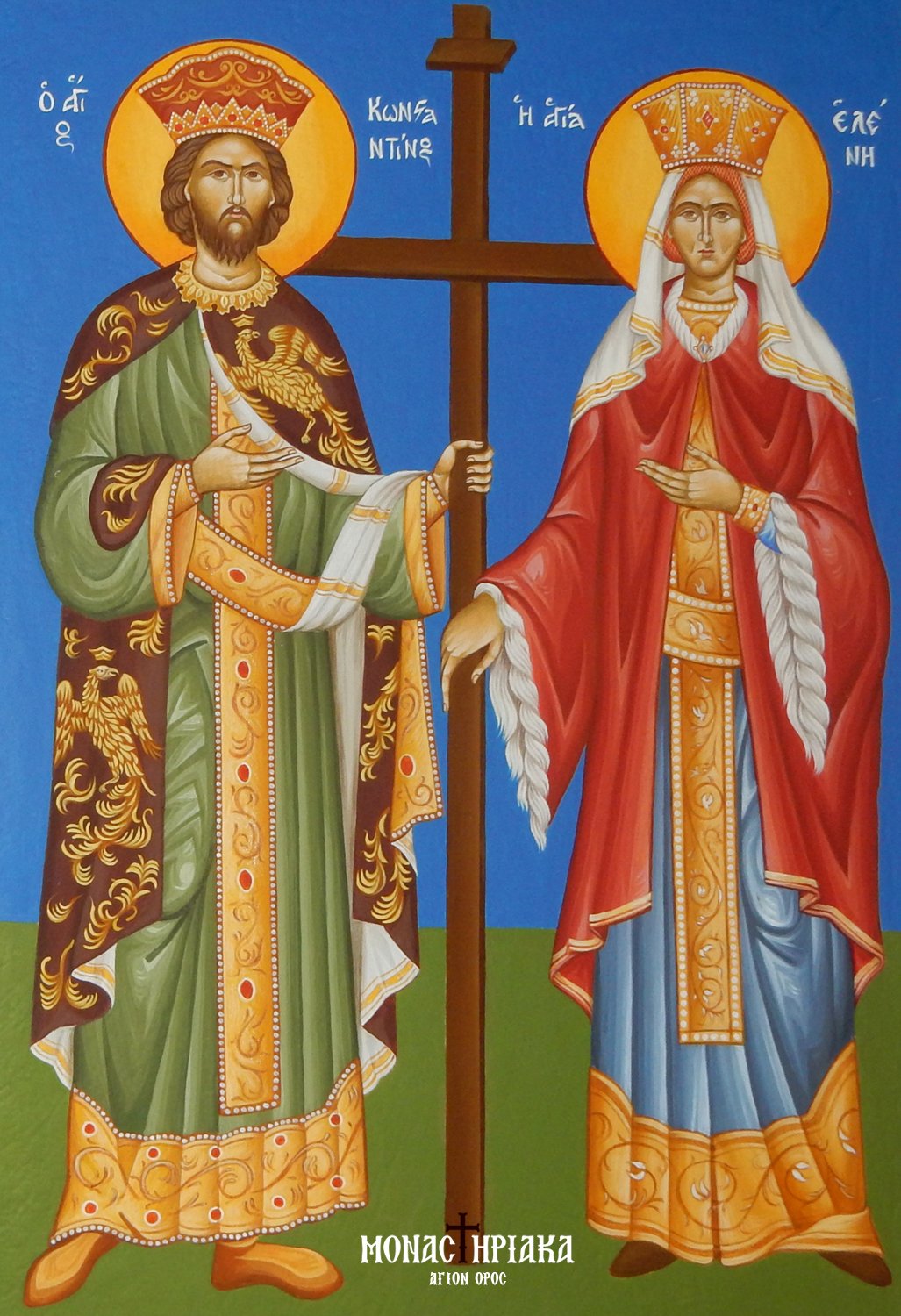
Saint Theodoti, the mother of the Holy Unmercenaries
Saint Theodoti hailed from the region of Ephesus in Asia Minor. Despite being a Christian from a young age, her parents pressured her to marry a prominent man who was a pagan.
Saint Theodoti and her husband had two children, the Holy Unmercenaries, Saint Cosmas and Damian. Shortly after the birth of their children, Saint Theodoti's husband embraced the christian faith.
Unfortunately, Saint Theodoti was widowed at a very young age and endeavored to raise Saints Cosmas and Damian on her own.
Saint Theodoti made sure to instill in her sons the values of the christian faith, which they applied daily in their lives. Additionally, she cared deeply about their spiritual cultivation, as the two brothers studied the medical sciences.
Saints Cosmas and Damian cared for the sick people selflessly and offered their assistance wherever there was a need.
Saint Theodoti peacefully fell asleep in the Lord and her memory is honored on January 2nd.
Here you can find icons of the Holy Unmercenaries, Saint Cosmas and Damian.

Saint Sophia, the mother of Saint Pisti, Saint Elpida, and Saint Agape
Saint Sophia and her three daughters, Pisti (Faith), Elpida (Hope) and Agape (Love) lived in Rome during the reign of Emperor Hadrian (117 – 138 AD). The three daughters were named after the quotation mentioned in the New Testament: "And now these three remain: faith, hope, and love. But the greatest of these is love." (1 Corinthians 13:13).
Saint Sophia and her daughters were distinguished for their character and piety. When she became a widow, Saint Sophia decided to settle in Rome, where their devotion and love for the Lord Jesus Christ soon became known.
Find here the Book: Orthodox Christian Life
The emperor was informed about the case of the Christian mother and her three daughters and ordered their arrest. First, they isolated the mother and then they began to interrogate the daughters, who remained steadfast in their faith and ultimately suffered martyrdom by beheading.
Saint Sophia buried her daughters and remained at their tombs for three days, praying to God to take her to Him.
Her wish was fulfilled and after three days, she peacefully fell asleep. Our Church celebrates Saint Sophia together with her daughters, Pisti, Elpida and Agape, on September 17th.
Here you can find icons of Saint Sophia and her daughters, Pisti, Elpida and Agape.
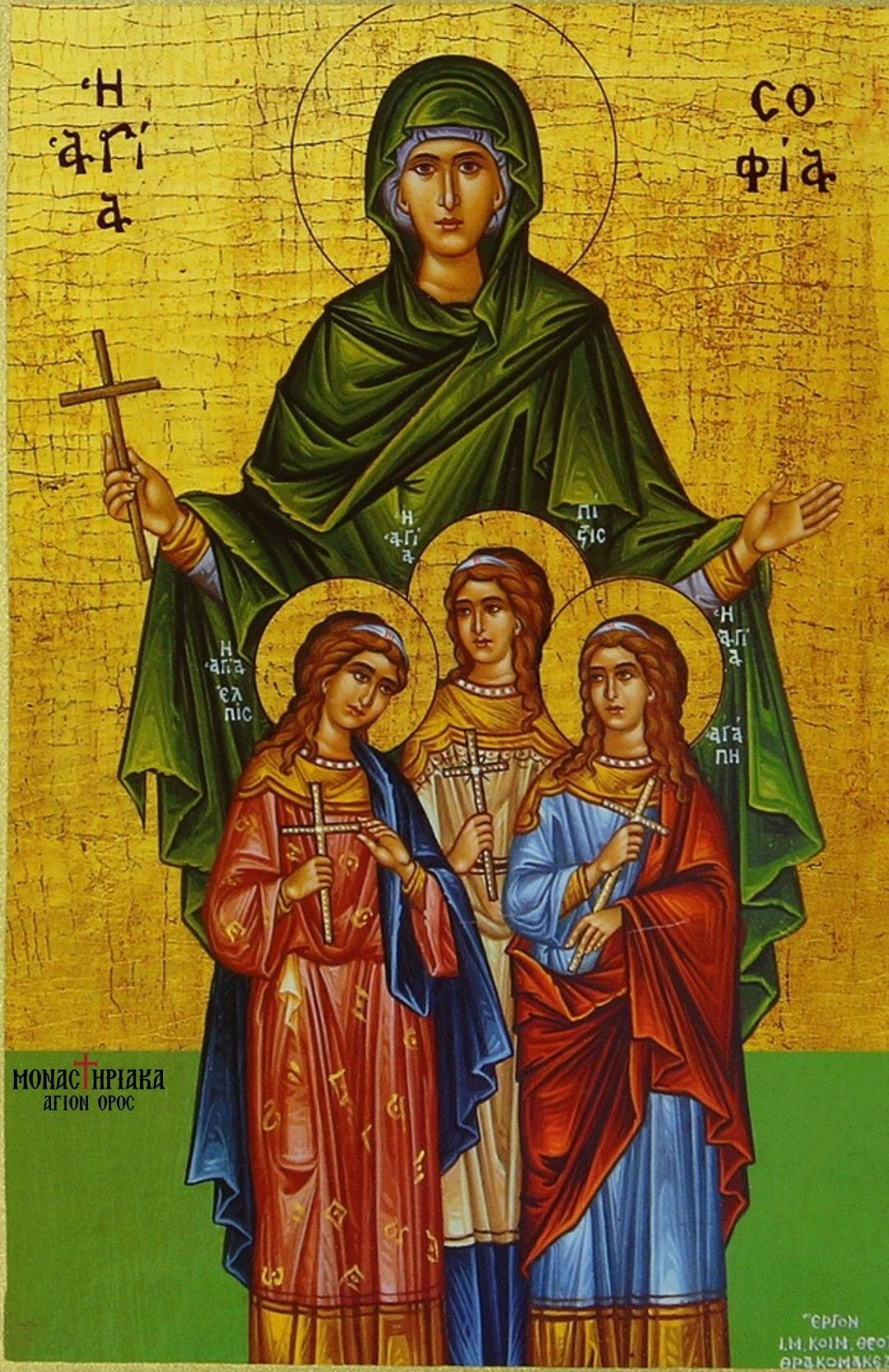
Saint Anthi, the mother of Saint Eleftherios
Saint Anthia or Anthi was the mother of Saint Eleftherios and was a christian. Her husband passed away early and she took upon herself the upbringing of her son according to christian way of life.
Eleftherios served as the Bishop of Rome in 182 AD and presented significant philanthropic work. During the persecutions under Septimius Severus, Eleftherios vehemently judged the emperor. This resulted in his arrest, torture, andfinally his martyrdom by beheading.
The most staggering moment was when Saint Anthia, witnessing her son's martyrdom, rushed to his lifeless body and kissed it tearfully. At that moment, the merciless executioners also beheaded Saint Anthia.
The memory of Saint Anthia is honored on the same day as that of Saint Eleftherios, on December 15th.
Here you can find the iconography of Saint Anthia.
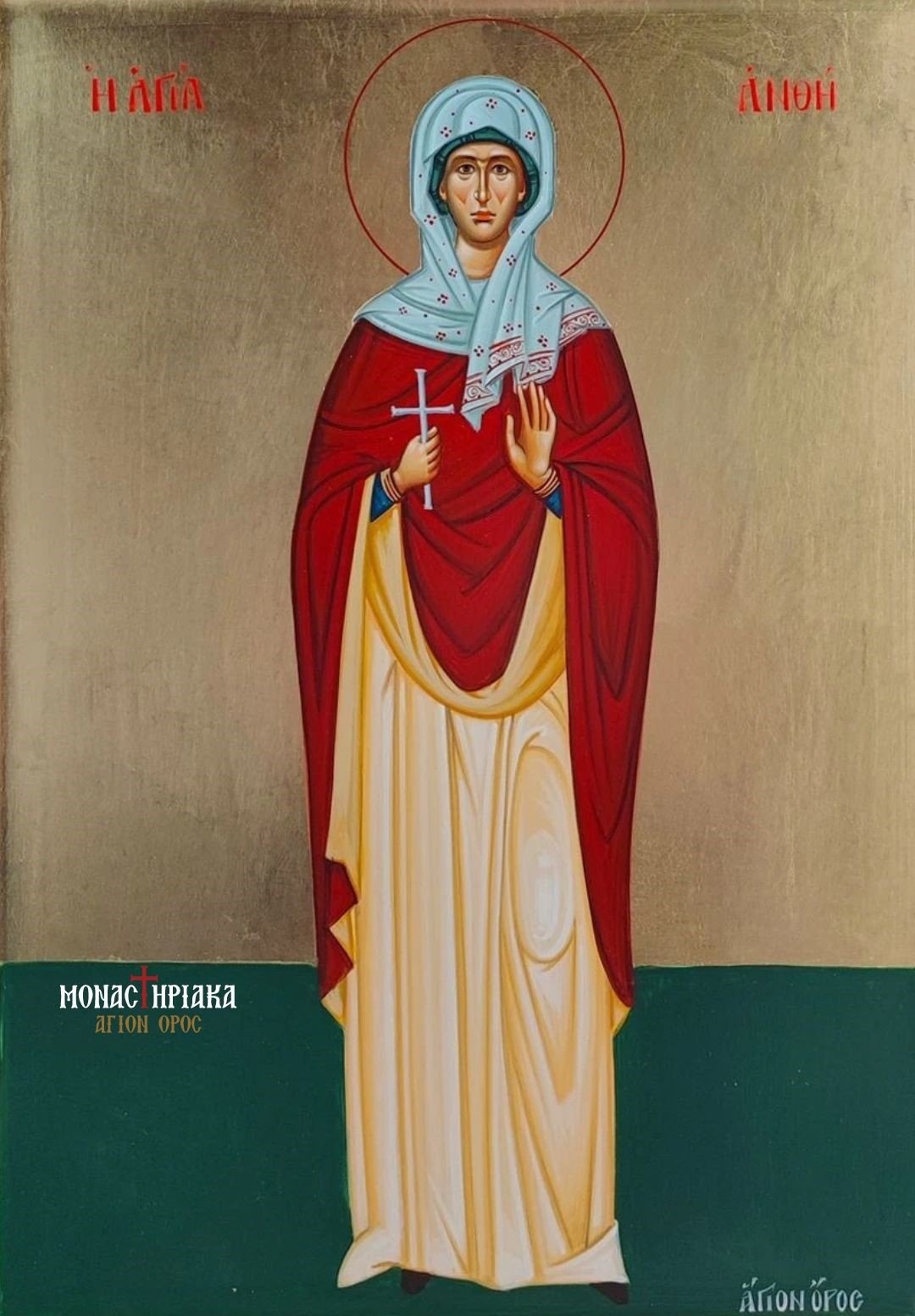
Saint Euboula, the mother of Saint Panteleimon
The information available about the life of Saint Euboula or Euboule is limited. According to Holy Scripture, she came from a family with devout parents and had great faith in God. It is also mentioned that she was a courageous and brave woman who gave birth to a son, Saint Panteleimon.
Saint Euboule peacefully passed away, and the Church commemorates her memory on March 30th.
Here you can find icons of Saint Panteleimon.
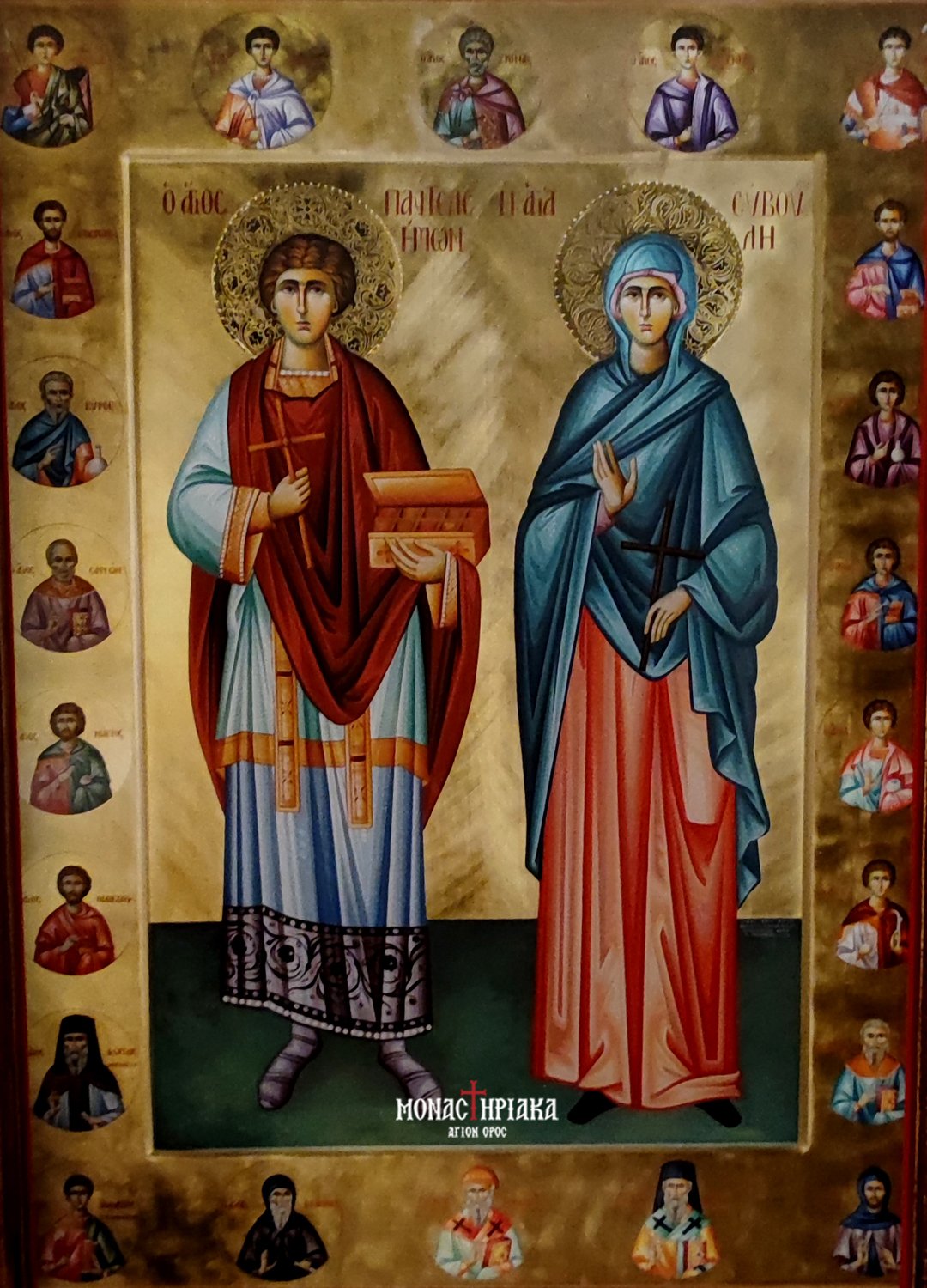
Saint Eulogia, the mother of Saint Theodosius the Cenobiarch
Saint Eulogia hailed from Mogarissos in Cappadocia and was the mother of Saint Theodosius the Cenobiarch. She was known for the great patience and courage she presented in the desert of Judea, where she followed ascetic life alongside her son.
Saint Eulogia admired the ascetic achievements of her son, Saint Theodosius, who established the coenobitic system of asceticism. She lived for a long time in the desert and pursued her own spiritual struggle through fasting, silence, and obedience.
Eventually, Saint Eulogia peacefully passed away in the desert of Judea and was buried in the Cave of the Magi. Our Church commemorates her memory on January 12th.
Here you can find an icon of Saint Theodosius the Cenobiarch.
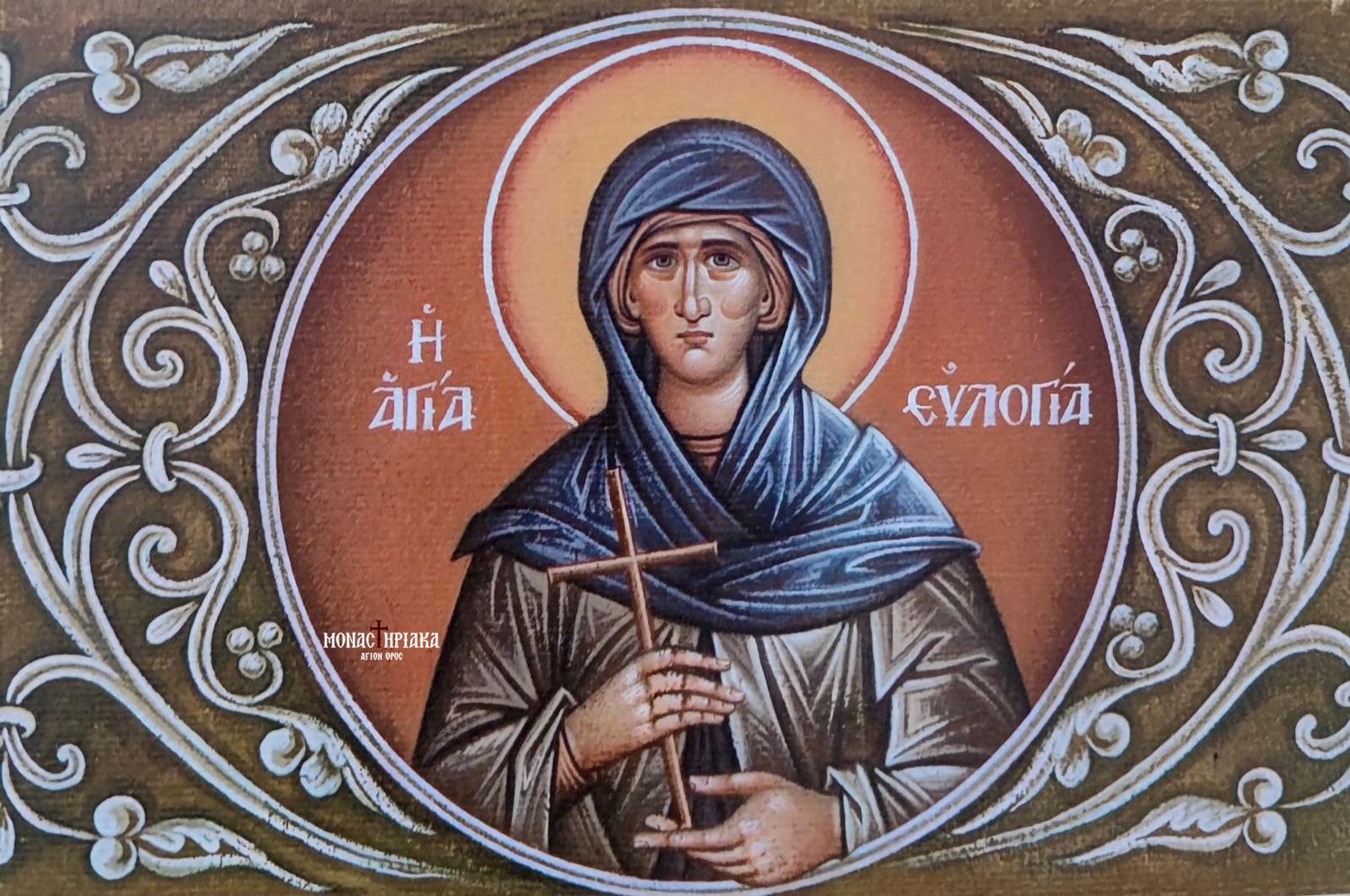
Saint Martha, the mother of Saint Simeon
Saint Martha was the mother of Saint Symeon, whom she bore by the promise of the Lord. She was endowed with numerous christian virtues, she actively supported her fellow human beings throughout her life.
Saint Martha peacefully reposed and was buried in Daphne of Antioch. According to tradition, her son transferred her holy relics near the pillar where he lived ascetically. Even today, her tomb works miraculously. Our Church commemorates the memory of Saint Martha on July 4th.
Click here for the Book: Wounded by Love: Elder Porphyrios
Saint Hypomone, the mother of eight children
Saint Hypomone, formerly known as Helen Dragases, hailed from a royal and blessed generation. In the late 1390s AD, at the age of 19, Helen Dragases married Manuel II Palaiologos.
Helen’s new life was to be a true Golgotha, filled with many sacrifices, humiliations and insults, in a desperate attempt to save the dying Empire, alongside her husband. However, Saint Hypomone proved to be a person with many virtues, inexhaustible, inner strength and patience.
Together with her husband, they had eight children, six sons, and two daughters. Two of their sons ascended to the imperial throne: John VIII (1425 - 1448 AD) and Constantine XI, the legendary last emperor (1448 - May 29, 1453 AD, the day of the fall of Constantinople).
The remaining sons, Theodore, Demetrius, and Thomas, served as despots of Mystras, and Andronicus served as Ruler of Thessaloniki. Unfortunately, the two daughters of the family died at a young age.
After the death of her husband, Helen Dragases followed the monastic life (1425 AD) at the Monastery of Lady Martha, where she received the name Hypomone, a charisma that she demonstrated throughout her entire life!
Here you can find decorative magnet with Saint Hypomone.

Saint Hypomone fell asleep on March 13, 1450 AD, having reigned for 35 years as Empress and 25 years as a humble nun. Her memory is honored on March 13th and on May 29th.
Here you can find icons of Saint Patience (Hypomone).
Saint Julitta, the mother of Saint Cyricus
Saint Julitta hailed from Iconium in Asia Minor and lived during the period of Emperor Diocletian. Due to the persecutions prevailing at that time, she was forced to flee with her son, Cyricus, to Tarsus. There, they were arrested by the governor, subjected to dreadful tortures, and eventually martyred. Their memory is honored on July 15th.
Here you can find an icon of Saints Julitta and Cyricus.
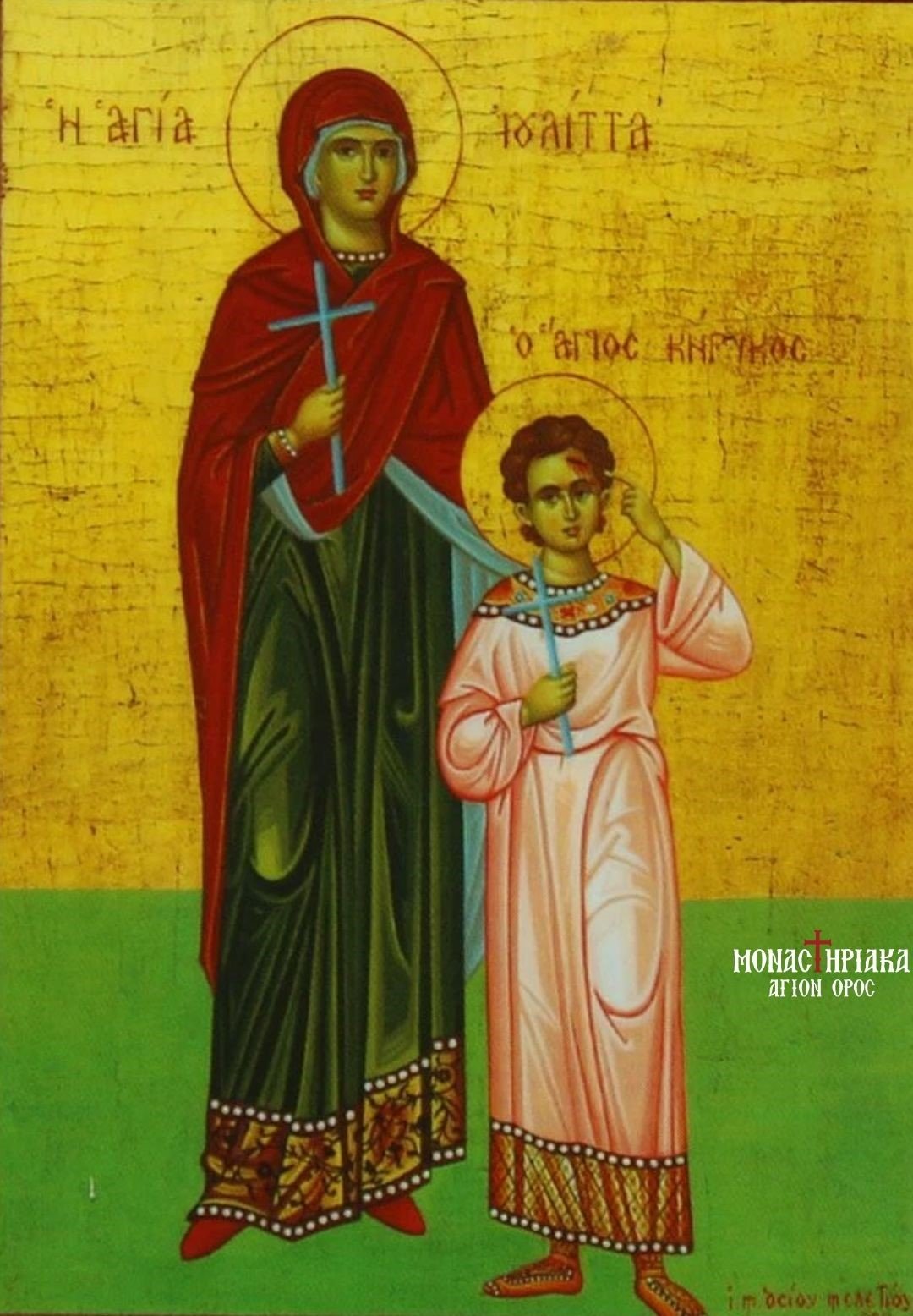
Saint Theopiste, the mother of Saint Agapius and Saint Theopistus
Tatiana, also known as Theopiste after her conversion to Christianity, was married to a proficient Roman army officer, named Placidus. The couple initially believed in idols, but later embraced the path of Jesus Christ. Tatiana's husband, renamed Eustathius, and they had two children together, Saint Agapius and Saint Theopistus.
When Emperor Trajan was informed of their conversion to Christianity, he exiled the entire family. Later, facing a military crisis, Eustathius was compelled to return to his military service.
With his great military skills, Eustathius significantly contributed to the army's victory and managed to reunite with his family.
According to tradition, Saint Theopiste, her husband, and their two sons were martyred atop a bronze, fire-heated bull in 117 AD. The family's martyrdom came after Saint Eustathius refused to participate in idolatrous sacrifices, following a demand from Emperor Hadrian. Their memory is honored on September 20th.
Click here for the book: Orthodox Psychotherapy: the Science of the Fathers
